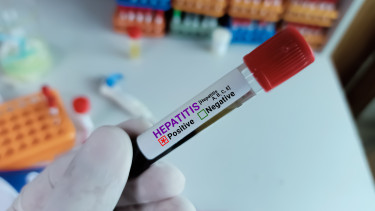We need to have a 'Plan B', says Hungarian epidemiologist Oroszi

Highlights of Beatrix Oroszi’s presentation:
It is hard to enter a pandemic, but it is even harder to emerge from it. After the coronavirus outbreak, the pandemic waves were expected to keep returning until a high percentage of the population is vaccinated, but it is already evident that this threshold is not easy to reach.
The fourth wave started at the end of the summer, but it looks different than the previous two. The key differences are that the epidemic curve is a lot less steep, vaccination coverage in the population aged 12 and over is 62.6% and 59% for the total population, and 11.4% of the population have already received their third doses of a COVID-19 vaccine.
Spain’s example shows exactly what we are expecting from vaccines. Whereas the number of new confirmed daily COVID-19 cases has been rising sharply, the number of coronavirus-related deaths does not trail this surge.
At the same time, there is no such sharp increase in the official number of new cases yet, and the gap has not widened as much as in Spain, for instance.
Oroszi says the slower rise in the number of new cases compared to other countries is thought to be a consequence of the difference in testing practices and the impact of vaccines.
The role of natural immunity gained by infection could be verified by a comprehensive seroepidemiological study.
The examples of Spain, Denmark and the United Kingdom show that vaccines lower the number of fatalities to their tenth.
The suboptimal immunity of high-risk groups in Hungary can have an adverse impact on the trajectory of the current wave.
Although the efficacy of the vaccines against infection wanes with time (regardless of which variant is dominant at the time), this does not apply to the prevention of severe symptoms, i.e. the vaccines are extremely effective in this respect even in the longer term.
The justification for third doses could be the waning efficacy of vaccines (against infection), but they could become part of the basis immunisation rather than being booster shots. If that is the role third doses will play, we will have won and no additional jabs will be required for several years.
There is no way of knowing which hypothesis will materialise, but Oroszi rather bets that third doses will become part of the basic immunisation protocol.
The reproduction rate of the virus in Hungary is currently estimated between 1.1 and 1.25, which means a flatter epidemic curve than in the second and third waves. But after the peak the winding down may not be that fast. There are examples for the contrary in various countries.
Three scenarios
Oroszi thinks there are three possible scenarios we should look at:
- The “good” scenario is when R0 is 1.2; the epidemic curve is flat and Hungary slowly ‘runs out’ of people susceptible to the infection.
- The “bad” scenario is when geographical differences in vaccination coverage remain; immunity declines with time; there are further seasonal effects; the R0 rises further; and the number of hospitalised COVID-19 patients and deaths cannot be sustainably kept low. This implies a protracted plateau. Although lockdown measures will not be required, but non-pharmacological measures will need to be taken in time.
- The “ugly” scenario is when the health care system gets exhausted after spending nearly 20 months in the pandemic; the virus spreads in a major part of the susceptible population; and new factors emerge that cannot be controlled (e.g. new variant, massive flu epidemic).
Where vaccination coverage is insufficient (i.e. north of 80%) people will have to accept a ‘Plan B’ which means mask-wearing in public, social distancing, and the use of the immunity certificates may need to be reinstated to keep the spread of the virus in check.
The pandemic could end with small steps, and this could be the temporary season in this process. Coronavirus will remain with us, but not as a pandemic pathogen, rather than an epidemic.
Photo: Ákos Stiller / Portfolio










